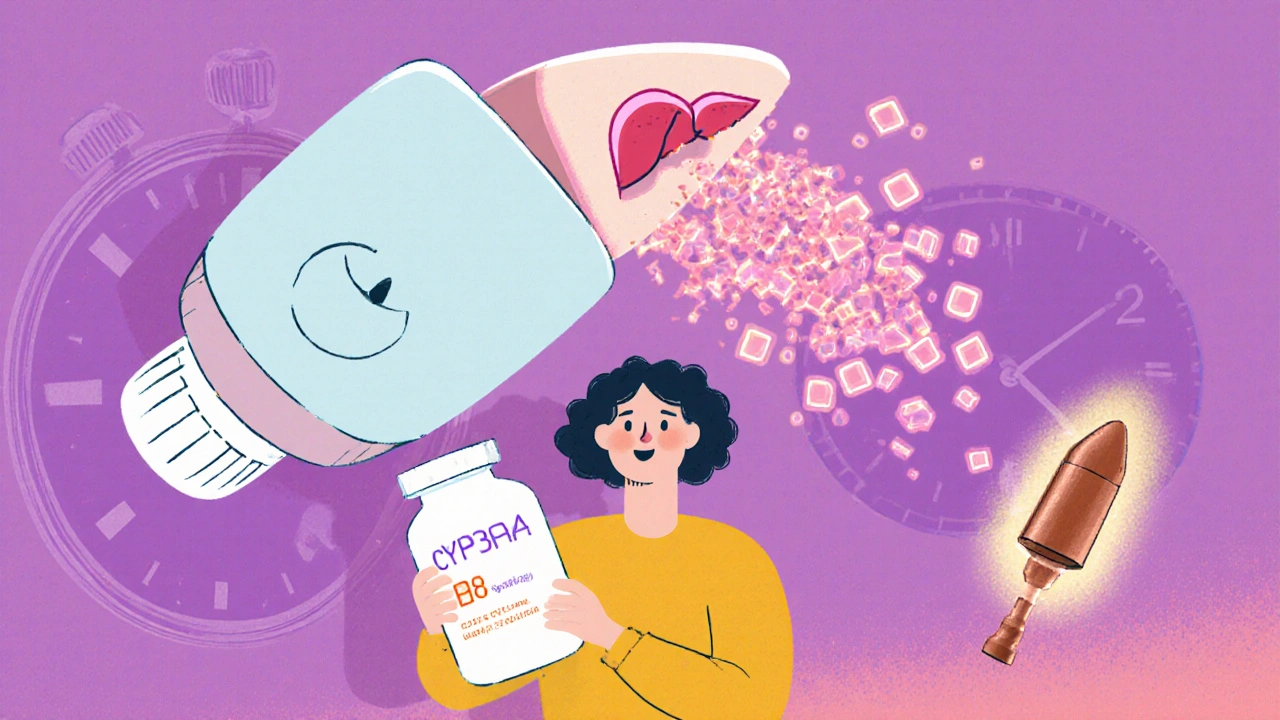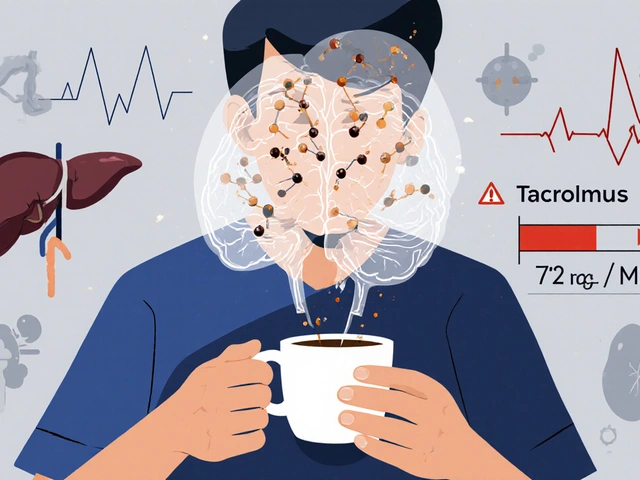Rifampin Birth Control Risk Calculator
Calculate Your Risk Window
High-Risk Period
Your total high-risk period is 0 days.
Recommended Backup Methods
- Copper IUD: Gold standard - 99% effective, no liver interaction
- Condoms + spermicide: Best option if IUD not available
- Progestin implant (Nexplanon): May work but not fully proven
Critical Warning
DO NOT RELY ON:
- Hormonal birth control (pills, patch, ring)
- Withdrawal method
- Emergency contraception (Plan B)
These methods are ineffective during and after rifampin treatment.
When you're prescribed rifampin for tuberculosis or a stubborn staph infection, the last thing you might think about is your birth control. But here’s the hard truth: rifampin can make your oral contraceptive useless. Not less effective. Not slightly less. Rifampin can drop hormone levels so low that ovulation happens - and pregnancy becomes a real possibility.
How Rifampin Breaks Birth Control
Rifampin doesn’t just kill bacteria. It also tricks your liver into working overtime. It turns on enzymes - specifically CYP3A4 - that break down hormones faster than normal. That includes estrogen and progestin, the two key ingredients in most birth control pills. Studies show rifampin can slash ethinyl estradiol levels by up to 67% and progestin by over 50%. That’s not a minor drop. That’s enough to wipe out the hormonal barrier keeping you from ovulating. This isn’t theory. It’s been seen in real people. Women on rifampin have had breakthrough bleeding, spotting, and even full periods while still taking their pills. Some got pregnant. The first reports came in the 1970s, and since then, dozens of confirmed cases have been documented. No other antibiotic has this level of proof.Why Other Antibiotics Don’t Do This
You’ve probably heard warnings about antibiotics and birth control. Penicillin, amoxicillin, tetracycline, azithromycin - you name it. But here’s the catch: none of them have been shown to reduce hormone levels in controlled studies. There were 117 reports in the UK between 1970 and 1999 linking those antibiotics to birth control failure. But when researchers looked closer, they found no actual pharmacokinetic changes. No drop in hormone levels. No increase in ovulation. Just coincidence, misremembered periods, or missed pills. Rifampin is the exception. It’s the only antibiotic with clear, repeatable, and measurable evidence that it interferes with hormonal contraception. Even rifabutin - a similar drug used for MAC infections - has a weaker effect. It lowers hormone levels by about 20-30%, not 50-60%. So if you’re on rifabutin, you still need to be careful, but the risk isn’t nearly as high.How Long the Risk Lasts - Even After You Stop
Rifampin’s half-life is only 3 to 4 hours. But its effect on your liver enzymes? That lasts weeks. Enzyme induction peaks around day 7 of treatment. And once it’s turned on, it doesn’t flip off right away. Your liver keeps producing those extra enzymes for 2 to 4 weeks after your last pill. That means if you stop rifampin on Day 30, you’re still at risk for contraceptive failure until Day 58. The CDC and other major health bodies say you need backup contraception - not just for the time you’re on rifampin, but for a full 28 days after you finish. Skipping this window is one of the most common mistakes doctors and patients make.What Backup Contraception Actually Works
Not all backup methods are created equal. Condoms help, but they’re not foolproof. The best options are non-hormonal and don’t rely on your liver’s metabolism.- Copper IUD: This is the gold standard. It works locally in the uterus. No hormones. No liver interaction. It’s over 99% effective and lasts up to 10 years.
- Progestin implant (Nexplanon): Early data suggests it may hold up during rifampin use. A 2023 study of 47 women showed zero pregnancies while on rifampin and Nexplanon. The dose is higher than pills, and the hormone is released slowly - which might help it resist enzyme breakdown. But the sample size is small, so it’s not yet officially recommended as a standalone solution.
- Condoms + spermicide: If you can’t or won’t use an IUD, this is the next best option. Double protection is better than one.

What Doesn’t Work
Don’t rely on these:- Other birth control pills: Switching brands or doses won’t help. All hormonal pills use the same estrogen and progestin compounds that rifampin breaks down.
- Withdrawal method: It’s unreliable even without drugs. Add rifampin? The risk skyrockets.
- Emergency contraception: Plan B and similar pills are metabolized by the same liver enzymes. Rifampin can make them less effective too. Don’t count on it as a safety net.
What Doctors Get Wrong
A 2017 survey found that only 42% of primary care doctors consistently warn patients about rifampin’s interaction with birth control. A shocking 28% told patients to use backup contraception for *all* antibiotics - which is unnecessary and causes confusion. Worse, many women aren’t told anything at all. A 2022 study in the Journal of Women’s Health found that 63% of women prescribed rifampin received no proper counseling on contraception. That’s not just a gap in care - it’s a public health risk. Doctors sometimes assume patients will read the pamphlet. Or they think the risk is too small to worry about. But when you’re talking about unintended pregnancy - especially in women with TB, who may already face high health risks - there’s no room for assumptions.What’s Changing in Treatment
The TB world is slowly moving away from rifampin. New regimens, like the 4-month high-dose rifapentine/moxifloxacin combo, are being tested as alternatives. If approved, they could reduce the number of women forced to choose between curing TB and preventing pregnancy. Meanwhile, manufacturers are now required to test every new hormonal contraceptive against rifampin before approval. The FDA and EMA demand it. That’s why newer pills, patches, and rings often have stronger warnings - but they’re still vulnerable. No hormonal method is safe with rifampin unless proven otherwise.
What You Should Do Right Now
If you’re prescribed rifampin:- Stop assuming your birth control is working.
- Ask your doctor: “Is this going to interfere with my birth control?” If they say no, push back. Cite the CDC guidelines.
- Get a copper IUD inserted before starting rifampin - or use condoms every time, every day, for the entire course plus 28 days after.
- Don’t wait for symptoms like spotting to realize something’s wrong. By then, it might be too late.
- If you’re on a progestin-only pill or implant, don’t assume you’re safe. The same rules apply.










